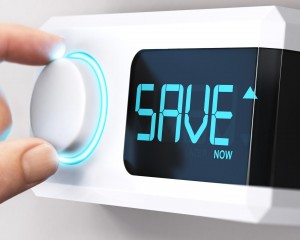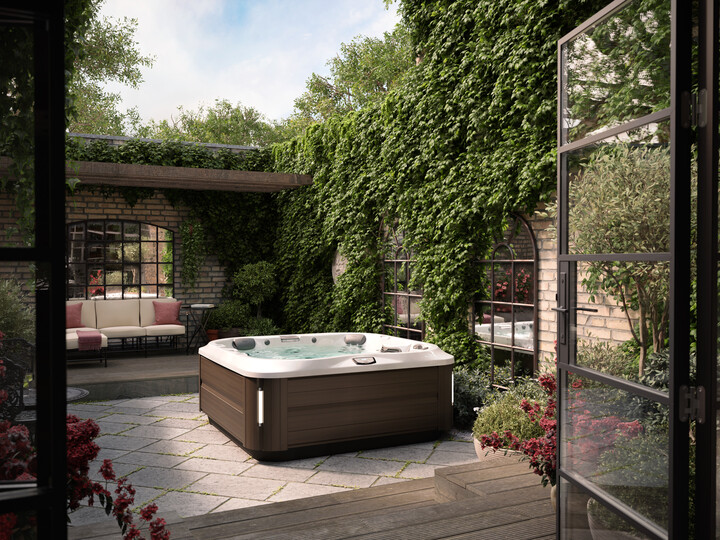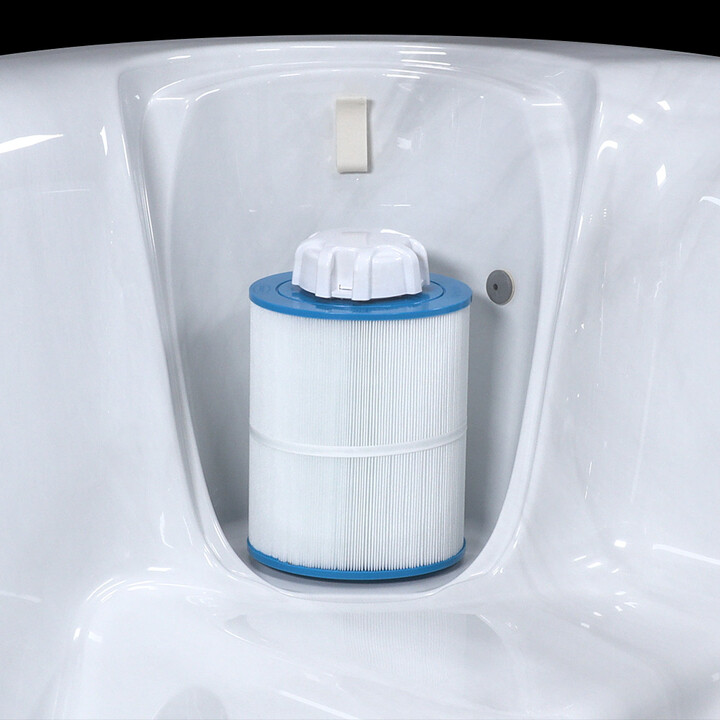I often compare the evolution of hot tubs to that of cellular telephones. Can you imagine purchasing a cellular telephone from 1995 and using it in today’s environment? The advancements in controls, pumps, heaters, insulation and surrounding materials have advanced at a pace that rivals the cellular telephone.
With hot tubs, some people get caught up on the number of pumps, type of insulation as well as the number of jets. First-time spa buyers usually try to rate the value of their purchase on these three key points.
The number of pumps is a good number to know. Typically, today’s hot tubs are two to three pump systems. That all relates to the number of jets and even more important how the spa is plumbed and what size the plumbing is. If you undersize the plumbing and add too many “elbows” you will have a pump that “cavitates” or “starves” for water flow. This will cause the pump to be loud and underpowered.
Typically, manufacturers that sell spas based on the number of jets will undersize the plumbing and add many “manifolds” which divert out to all the spa jets. These jets are going to be very small in the jet nozzle size in order to produce any kind of pressure to keep a purchaser from returning their purchase. What happens with these types of jets is they are very irritating to your skin. The sensation is similar to someone poking you non-stop with their finger.
Also, pay close attention to the pump that is being promoted. If they list the pump as 6 bhp, that sounds like a six horsepower pump correct? It is not a true 6 hp pump, it is likely a 2 hp pump, they can call it six brake horsepower (bhp) as that is the energy created once the pump starts up. We can talk in depth about this if you would like further as there is a lot more information out there, but the crux of it is to just simply look at the AMP rating of the pump motor and you will notice that it is virtually identical to that of a pump without a pump that has “fudged the numbers”.
In our company, we demand our manufacturers utilize large plumbing and “sweep” plumbing fittings. We combine this with the correct number of quality therapy jets that give you the deep tissue massage and relaxation you expect and not the pin needle irritating jet feeling. So typically, our most popular models that are second and third-time spa purchasers decide upon will have two hydrotherapy pumps.
The third pump is the utmost important pump. It is the heart and soul of your hot tub, it is the circulation “circ” pump. This is the pump that processes the water through our sterilization system, pulls water through our multi-stage filtration system and passes it back out through the titanium heater.
I have acquired plenty of knowledge in twenty-five years about circ pumps. There are two major considerations to address when looking at a circulation pump. First is sound, because that’s what this is all about, your experience in the hot tub, your relaxation. You want your circulation pump to be quiet. Many people enjoy their jets, but then after the massage, they want to relax in quiet. If you purchase a hot tub without a circ pump, that manufacturer will be using a two-speed pump in their system. The low speed of the pump is used to filter and heat the water, while the high speed is used for jets action. Here is where efficiency and sound come together. Typically, the two-speed pump is drawing eight amps on low speed to filter the water compared to one amp of power with a circulation pump. What is worse is the two-speed pump is very loud and vibrates, even on the low speed! Have you ever heard a hot tub humming in a yard, or worse vibrating through deck joists into a home? That hot tub has a two-speed pump and it is drawing eight amps of power to filter the water while creating that noise.
So, if you decide you want a circulation pump, please be aware they are not all the same. In our company, our service department has seen the small “fish tank” style circulation pumps in hot tubs. These pumps typically have magnetic impellers in their wet ends, which means no shaft to turn the water through the pump. These small circulation pumps can easily stop operating with sand buildup, calcium buildup or even a chip off an acorn or a tiny piece of mulch. I have heard of these small pumps freezing while they are operating correctly in our northern Minnesota weather! Below is a picture of a typical fish tank style pump for circulation.
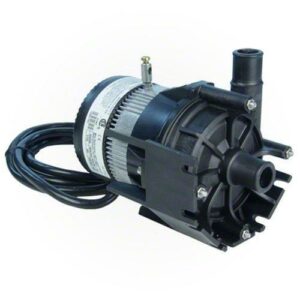
A better alternative for circulating your hot tub’s water and having a one amp draw of power is choosing an industrial-sized circulation pump. These pumps are equally as quiet as the “fish tank” style pump, but they utilize a real shaft and impeller system. They will usually run on 1.5’ plumbing versus the ¾’ clear hose of the fish style system. If you want quiet, efficiency and a high-quality circulation pump, below is a picture of the difference that second and third time hot tub purchasers have come to expect:
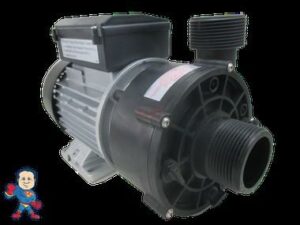
I think you can see the difference and will likely determine the stability and reliability of the industrial sized pump. Can you imagine having your hot tub facing north in January with a north wind hitting it? I know which pump I want my customers to be equipped with.
It is well known in the industry and by many consumers, that today’s quality-built hot tubs are all energy efficient. When I started in the industry in the early 1990s, the era of the spa shells only with no insulation and usually no top covers were coming to an end and being replaced by insulated hot tubs. Hot tubs got a bad reputation for being costly to operate and causing moisture and mold problems in homes in the 1970s and 1980s. Here is the scoop: People were building these shells only units in sunrooms and outside decks. Again, they were not insulated and had no covers, the heaters were constantly running and if the unit was indoors, it was causing a constant moisture problem. Combine the indoor units with a low air temperature and it was a breeding ground for problems.
By the early 1990s, the evolution of the hot tub had morphed to a self-contained system, insulated and topped with a thick spa cover. These units were efficient to own and operate, and generally only emitted humidity when the cover was off, making them more practical for an indoor application.
In our company, we choose only what we have come to know to be the best-insulated system for the scale of “long-term cost of ownership”. We will not provide a product that is 100% sealed off capturing all the heat created by the pumps. We have seen that no ventilation is a breaking ground for motor capacitors, PC board terminals (these are the computers in your spa that operate the system) as well as many electrical connections. By having a sealed off system, you are not saving any money on monthly electrical costs, it’s just a different way to do it, but what you are risking is corrosion as well as a high product failure ratio.
We teach our customers to inspect the equipment area routinely. Open your equipment door, look for anything that seems out of place. Equipment doors need to be easy to remove and replace. About 70 percent of the hot tubs that we deliver have our exclusive quick access. Gone are the days of getting on your knees with your screw gun in hand, only to have to remove twenty screws to simply inspect your equipment. Our quick access is two seconds off, three seconds on! Realistically, getting consumers to access their equipment for routine inspection is tough, but it is far more realistic with the quick access door.
We encourage our customers to do their due diligence with their purchases. Our customers love our straight talk and we encourage you to drift through the sales process and truly focus on comfort, reliability and company longevity. Because, if you are not comfortable sitting in your hot tub, what’s the point of the purchase?

